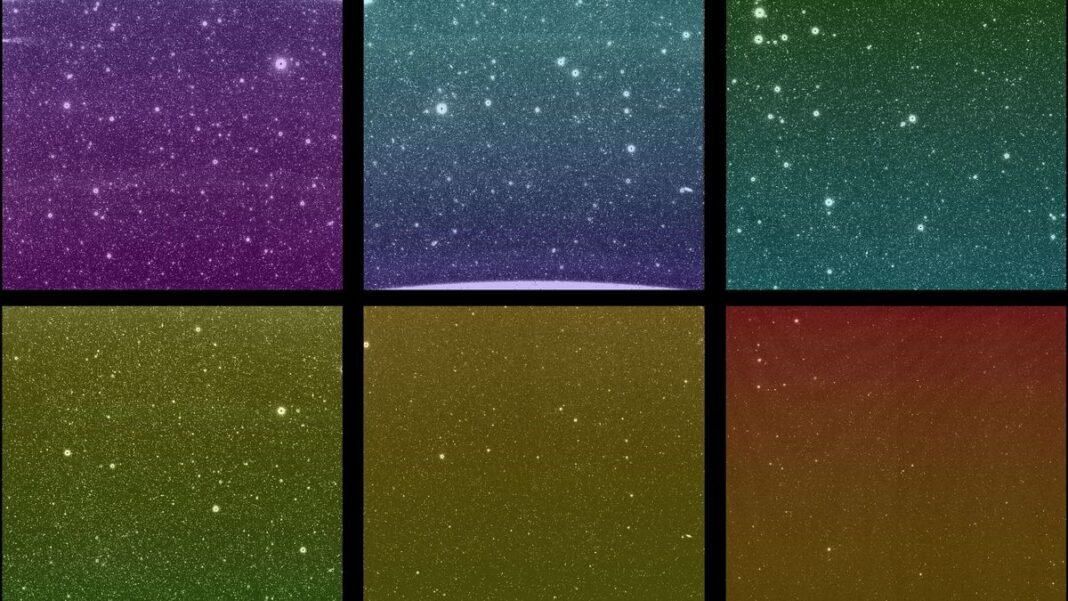Contents
NASA’s SPHEREx Space Telescope Takes First Images, Set to Explore the Universe
NASA’s SPHEREx space telescope has successfully taken its first light images, marking a significant milestone in its mission to explore the universe’s infrared spectrum, enhance our understanding of cosmic history, and unveil hidden galaxies waiting to be discovered.
Lead: On April 1, 2023, NASA proudly announced that its latest infrared space telescope, SPHEREx (Spectro-Photometer for the History of the Universe, Epoch of Reionization and Ices Explorer), has officially opened its eyes to the cosmos. This groundbreaking moment occurs just weeks after its launch on March 11, 2023. SPHEREx will delve into the mysteries of the universe, focusing on wavelengths invisible to the human eye, in a project that aims to map hundreds of millions of galaxies and investigate the origins of the universe.
What is SPHEREx?
SPHEREx is a sophisticated, wide-angle infrared telescope designed to extend our understanding of the cosmos. Here are some key facts:
– **Research Focus**: SPHEREx will study infrared wavelengths, crucial in peering through cosmic dust to capture insights about galaxies, stars, and the early universe.
– **Primary Objective**: The telescope aims to conduct a comprehensive survey of nearly 450 million galaxies, gathering data that can reveal the structure and evolution of the universe.
– **Cutting-Edge Technology**: Unlike the James Webb Space Telescope, which dives deep into the details of ancient celestial bodies, SPHEREx will map out the comprehensive cosmic scene around these formations.
SPHEREx’s First Light Images
SPHEREx recently captured its first images, a phenomenon referred to as “first light.” This milestone indicates that all systems on the spacecraft are functioning as intended. Jamie Bock, principal investigator for SPHEREx at Caltech and NASA’s Jet Propulsion Laboratory, commented, “Based on the images we are seeing, we can now say that the instrument team nailed it.”
– **Six Detectors**: Each of the six images produced corresponds to a different detector on SPHEREx, revealing vast areas of the sky.
– **102 Unique Wavelength Bands**: SPHEREx can analyze the universe across 102 infrared bands, allowing it to assess details and uncover secrets in the universe that visible light cannot.
The Importance of Infrared Astronomy
Infrared astronomy plays a vital role in modern astrophysics. Here’s why it matters:
– **Visibility through Cosmic Dust**: Unlike visible-light telescopes, infrared instruments can penetrate cosmic dust, providing a clearer view of celestial bodies that are otherwise obscured.
– **Study of Distant Galaxies**: The universe’s expansion causes the light from distant galaxies to redshift into the infrared part of the spectrum, making infrared observations essential for studying the universe’s evolution.
– **Mapping Cosmic History**: By analyzing infrared wavelengths, scientists can look back in time, observing formations that emerged right after the Big Bang, approximately 13.7 billion years ago.
The Science Behind SPHEREx’s Technology
The technology that powers SPHEREx is cutting-edge and designed with precision:
– **Cooling Down**: The spacecraft’s detectors must operate at extremely low temperatures to prevent interference from heat, which could disrupt infrared measurements.
– **Observatory’s Field of View**: SPHEREx boasts a wide field of view—about 20 times larger than the full moon’s area—allowing it to capture extensive cosmic data.
Looking Ahead: The Mission Timeline
SPHEREx is anticipated to begin its routine science operations by late April 2023. Here’s what to expect:
– **Daily Observations**: Once operational, SPHEREx is expected to make approximately 600 exposures each day, generating an incredible amount of data for astronomers to analyze.
– **Mission Duration**: The entire mission aims to last a minimum of two years, with the option for extension depending on the success of its initial operations.
Future Implications and Discoveries
The insights gleaned from SPHEREx not only stand to deepen our understanding of the universe but also have the potential to reshape how we view cosmic history. Key implications include:
– **Studying Cosmic Ice**: By analyzing the distribution of ices within galaxies, SPHEREx can provide clues about the building blocks of life.
– **Charting Cosmic Structure**: Mapping the structure of the universe can illuminate the processes that have shaped cosmic evolution over billions of years.
Conclusion: The successful first light of NASA’s SPHEREx space telescope is a promising start for a mission poised to unlock the secrets of our universe. As it embarks on its journey to examine galaxies, cosmic structures, and the history of matter, SPHEREx could redefine our understanding of the cosmos and our place within it.
Keywords: SPHEREx, NASA, space telescope, infrared astronomy, first light images, universe exploration, cosmic history, galaxy mapping, James Webb Space Telescope.
Hashtags: #NASA #SPHEREx #SpaceTelescopes #InfraredAstronomy #Astrophysics #Discovery #Cosmos
Source link



